ARM System Developer’s Guide Designing and Optimizing System Software
Copyright Page
Contents
About the Authors
Preface
Chapter 1. ARM Embedded Systems
1.1 The RISC design philosophy
1.2 The ARM Design Philosophy
1.3 Embedded System Hardware
1.4 Embedded System Software
1.5 Summary
Chapter 2. ARM Processor Fundamentals
2.1 Registers
2.2 Current Program Status Register
2.3 Pipeline
2.4 Exceptions, Interrupts, and the Vector Table
2.5 Core Extensions
2.6 Architecture Revisions
2.7 ARM Processor Families
2.8 Summary
Chapter 3. Introduction to the ARM Instruction Set
3.1 Data Processing Instructions
3.2 Branch Instructions
3.3 Load-Store Instructions
3.4 Software Interrupt Instruction
3.5 Program Status Register Instructions
3.6 Loading Constants
3.7 ARMv5E Extensions
3.8 Conditional Execution
3.9 Summary
Chapter 4. Introduction to the Thumb Instruction Set
4.1 Thumb Register Usage
4.2 ARM-Thumb Interworking
4.3 Other Branch Instructions
4.4 Data Processing Instructions
4.5 Single-Register Load-Store Instructions
4.6 Multiple-Register Load-Store Instructions
4.7 Stack Instructions
4.8 Software Interrupt Instruction
4.9 Summary
Chapter 5. Efficient C Programming
5.1 Overview of C Compilers and Optimization
5.2 Basic C Data Types
5.3 C Looping Structures
5.4 Register Allocation
5.5 Function Calls
5.6 Pointer Aliasing
5.7 Structure Arrangement
5.8 Bit-fields
5.9 Unaligned Data and Endianness
5.10 Division
5.11 Floating Point
5.12 Inline Functions and Inline Assembly
5.13 Portability Issues
5.14 Summary
Chapter 6. Writing and Optimizing ARM Assembly Code
6.1 Writing Assembly Code
6.2 Profiling and Cycle Counting
6.3 Instruction Scheduling
6.4 Register Allocation
6.5 Conditional Execution
6.6 Looping Constructs
6.7 Bit Manipulation
6.8 Efficient Switches
6.9 Handling Unaligned Data
6.10 Summary
Chapter 7. Optimized Primitives
7.1 Double-Precision Integer Multiplication
7.2 Integer Normalization and Count Leading Zeros
7.3 Division
7.4 Square Roots
7.5 Transcendental Functions: log, exp, sin, cos
7.6 Endian Reversal and Bit Operations
7.7 Saturated and Rounded Arithmetic
7.8 Random Number Generation
7.9 Summary
Chapter 8. Digital Signal Processing
8.1 Representing a Digital Signal
8.2 Introduction to DSP on the ARM
8.3 FIR filters
8.4 IIR Filters
8.5 The Discrete Fourier Transform
8.6 Summary
Chapter 9. Exception and Interrupt Handling
9.1 Exception Handling
9.2 Interrupts
9.3 Interrupt Handling Schemes
9.4 Summary
Chapter 10. Firmware
10.1 Firmware and Bootloader
10.2 Example: Sandstone
10.3 Summary
Chapter 11. Embedded Operating Systems
11.1 Fundamental Components
11.2 Example: Simple Little Operating System
11.3 Summary
Chapter 12. Caches
12.1 The Memory Hierarchy and Cache Memory
12.2 Cache Architecture
12.3 Cache Policy
12.4 Coprocessor 15 and Caches
12.5 Flushing and Cleaning Cache Memory
12.6 Cache Lockdown
12.7 Caches and Software Performance
12.8 Summary
Chapter 13. Memory Protection Units
13.1 Protected Regions
13.2 Initializing the MPU, Caches, and Write Buffer
13.3 Demonstration of an MPU system
13.4 Summary
Chapter 14. Memory Management Units
14.1 Moving from an MPU to an MMU
14.2 How Virtual Memory Works
14.3 Details of the ARM MMU
14.4 Page Tables
14.5 The Translation Lookaside Buffer
14.6 Domains and Memory Access Permission
14.7 The Caches and Write Buffer
14.8 Coprocessor 15 and MMU Configuration
14.9 The Fast Context Switch Extension
14.10 Demonstration: A Small Virtual Memory System
14.11 The Demonstration as mmuSLOS
14.12 Summary
Chapter 15. The Future of the Architecture
15.1 Advanced DSP and SIMD Support in ARMv6
15.2 System and Multiprocessor Support Additions to ARMv6
15.3 ARMv6 Implementations
15.4 Future Technologies beyond ARMv6
15.5 Summary
Appendix A. ARM and Thumb Assembler Instructions
A.1 Using This Appendix
A.2 Syntax
A.3 Alphabetical List of ARM and Thumb Instructions
A.4 ARM Assembler Quick Reference
A.5 GNU Assembler Quick Reference
Appendix B. ARM and Thumb Instruction Encodings
B.1 ARM Instruction Set Encodings
B.2 Thumb Instruction Set Encodings
B.3 Program Status Registers
Appendix C. Processors and Architecture
C.1 ARM Naming Convention
C.2 Core and Architectures
Appendix D. Instruction Cycle Timings
D.1 Using the Instruction Cycle Timing Tables
D.2 ARM7TDMI Instruction Cycle Timings
D.3 ARM9TDMI Instruction Cycle Timings
D.4 StrongARM1 Instruction Cycle Timings
D.5 ARM9E Instruction Cycle Timings
D.6 ARM10E Instruction Cycle Timings
D.7 Intel XScale Instruction Cycle Timings
D.8 ARM11 Cycle Timings
Appendix E. Suggested Reading
E.1 ARM References
E.2 Algorithm References
E.3 Memory Management and Cache Architecture (Hardware Overview and Reference)
E.4 Operating System References
Index
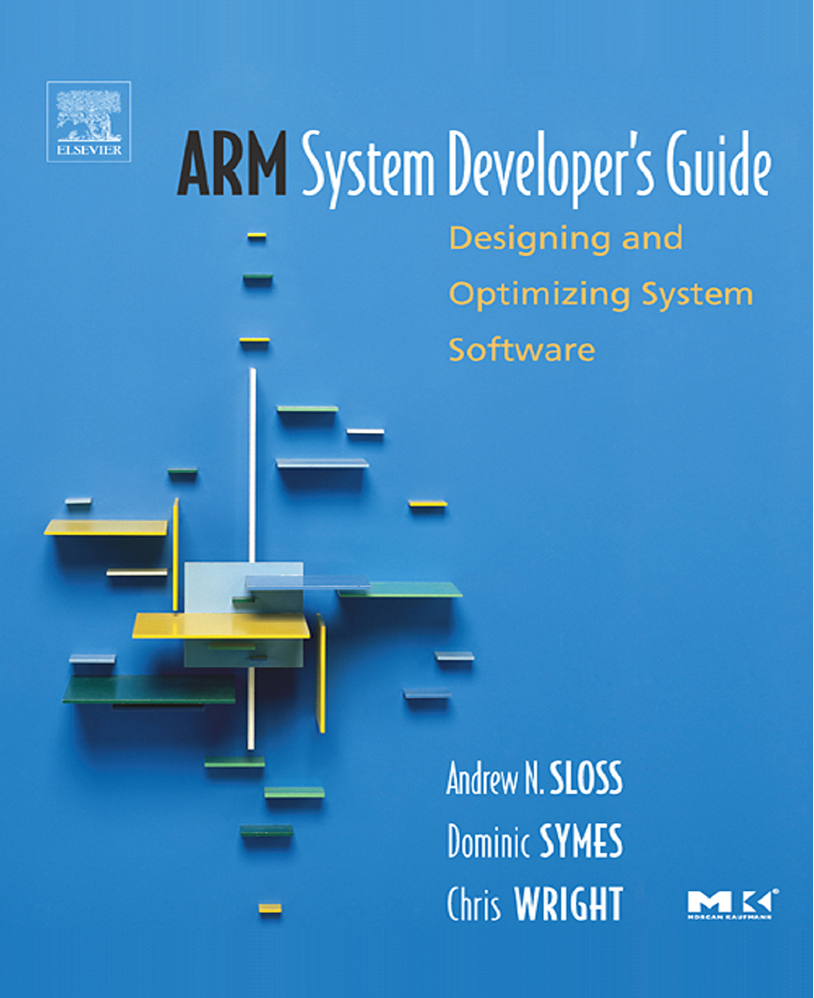
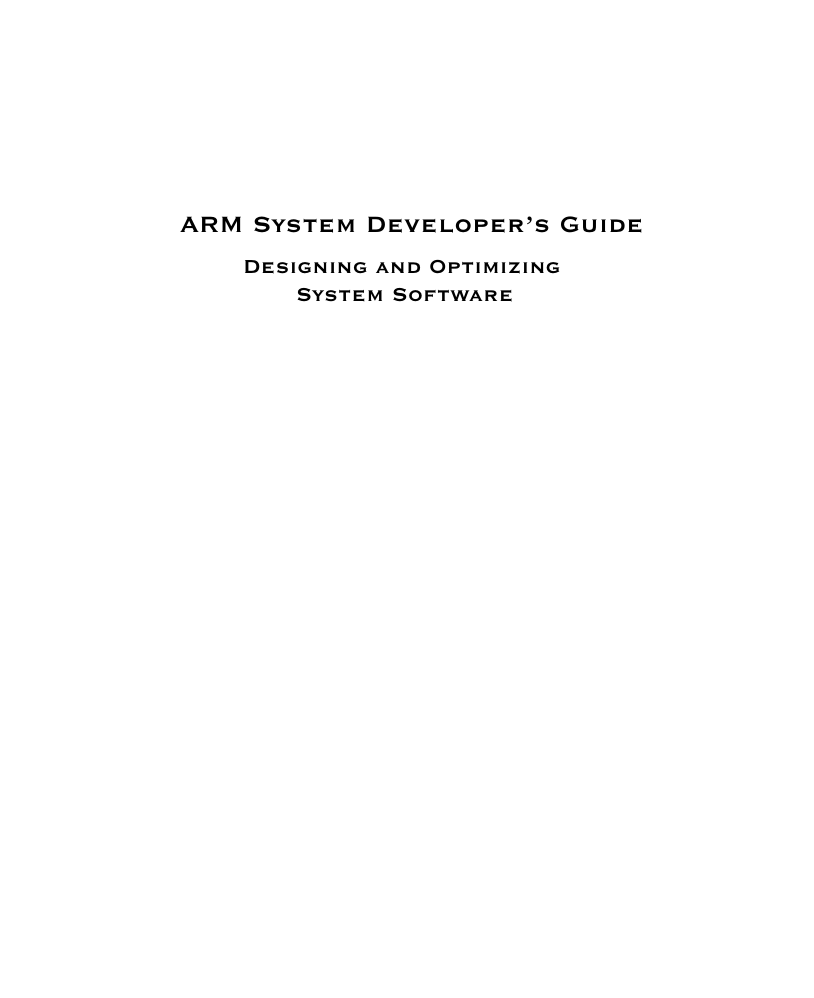


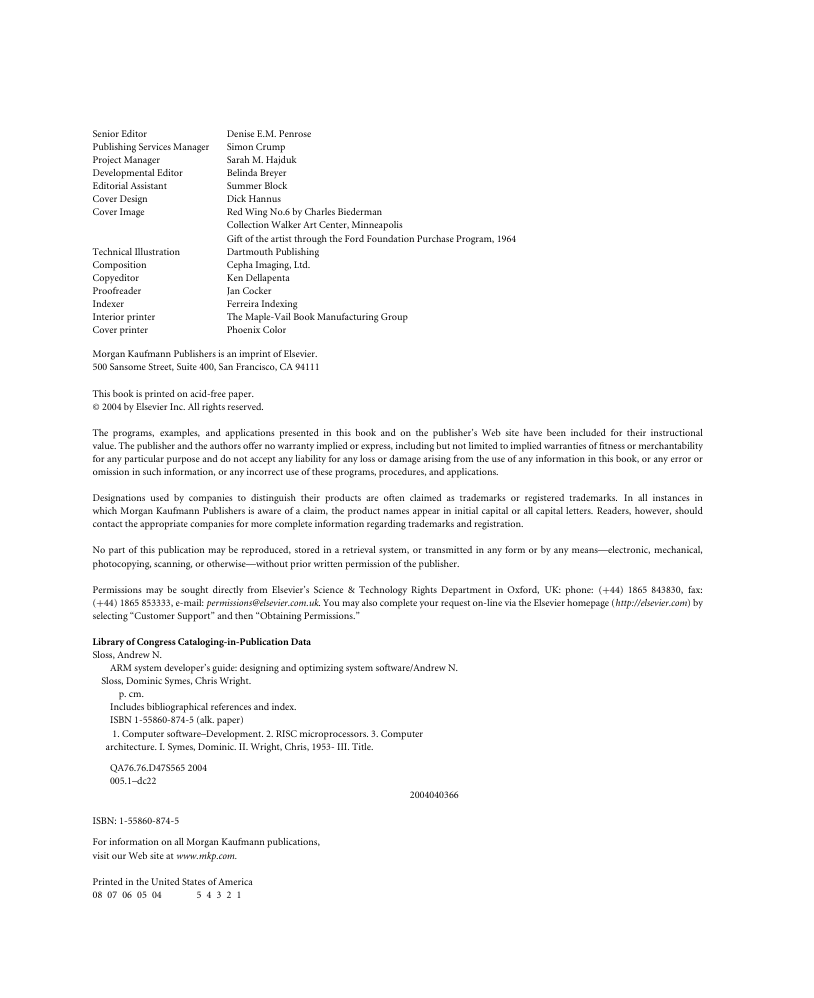

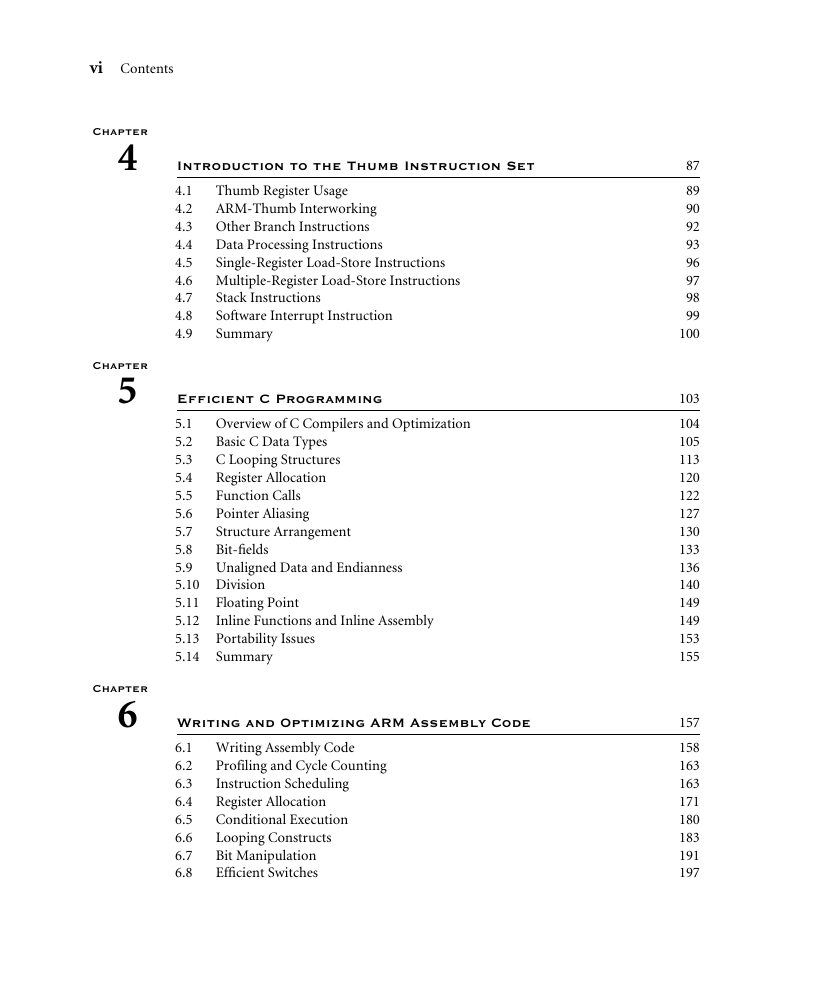
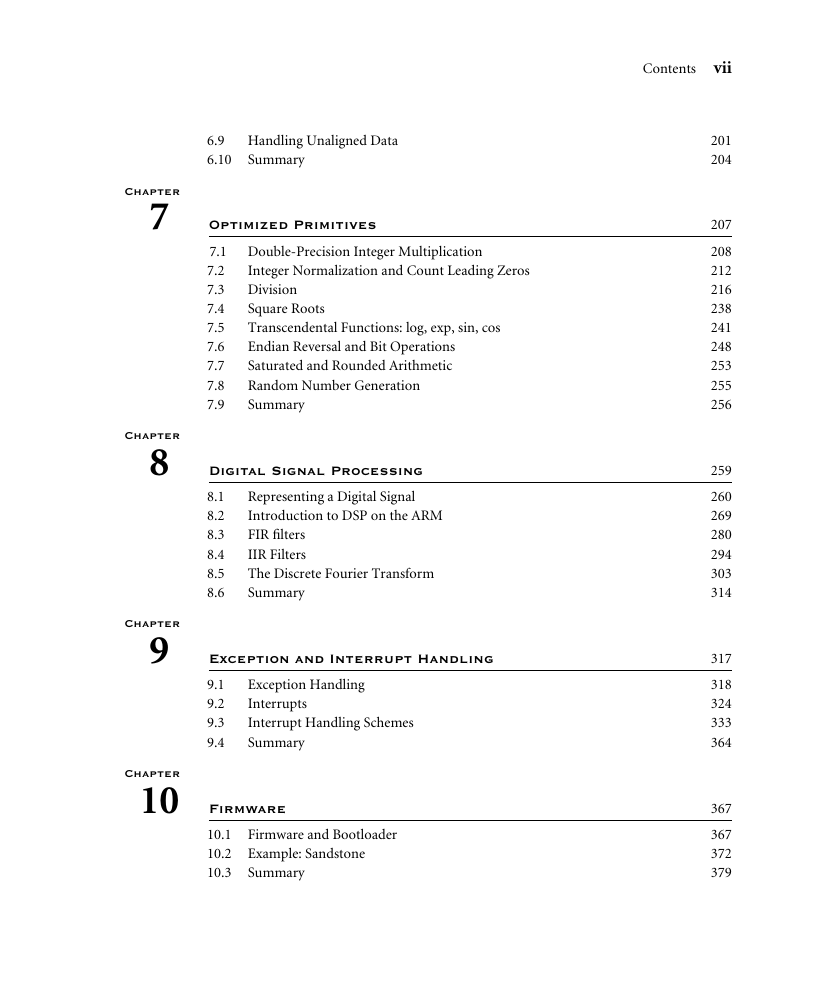








 2023年江西萍乡中考道德与法治真题及答案.doc
2023年江西萍乡中考道德与法治真题及答案.doc 2012年重庆南川中考生物真题及答案.doc
2012年重庆南川中考生物真题及答案.doc 2013年江西师范大学地理学综合及文艺理论基础考研真题.doc
2013年江西师范大学地理学综合及文艺理论基础考研真题.doc 2020年四川甘孜小升初语文真题及答案I卷.doc
2020年四川甘孜小升初语文真题及答案I卷.doc 2020年注册岩土工程师专业基础考试真题及答案.doc
2020年注册岩土工程师专业基础考试真题及答案.doc 2023-2024学年福建省厦门市九年级上学期数学月考试题及答案.doc
2023-2024学年福建省厦门市九年级上学期数学月考试题及答案.doc 2021-2022学年辽宁省沈阳市大东区九年级上学期语文期末试题及答案.doc
2021-2022学年辽宁省沈阳市大东区九年级上学期语文期末试题及答案.doc 2022-2023学年北京东城区初三第一学期物理期末试卷及答案.doc
2022-2023学年北京东城区初三第一学期物理期末试卷及答案.doc 2018上半年江西教师资格初中地理学科知识与教学能力真题及答案.doc
2018上半年江西教师资格初中地理学科知识与教学能力真题及答案.doc 2012年河北国家公务员申论考试真题及答案-省级.doc
2012年河北国家公务员申论考试真题及答案-省级.doc 2020-2021学年江苏省扬州市江都区邵樊片九年级上学期数学第一次质量检测试题及答案.doc
2020-2021学年江苏省扬州市江都区邵樊片九年级上学期数学第一次质量检测试题及答案.doc 2022下半年黑龙江教师资格证中学综合素质真题及答案.doc
2022下半年黑龙江教师资格证中学综合素质真题及答案.doc